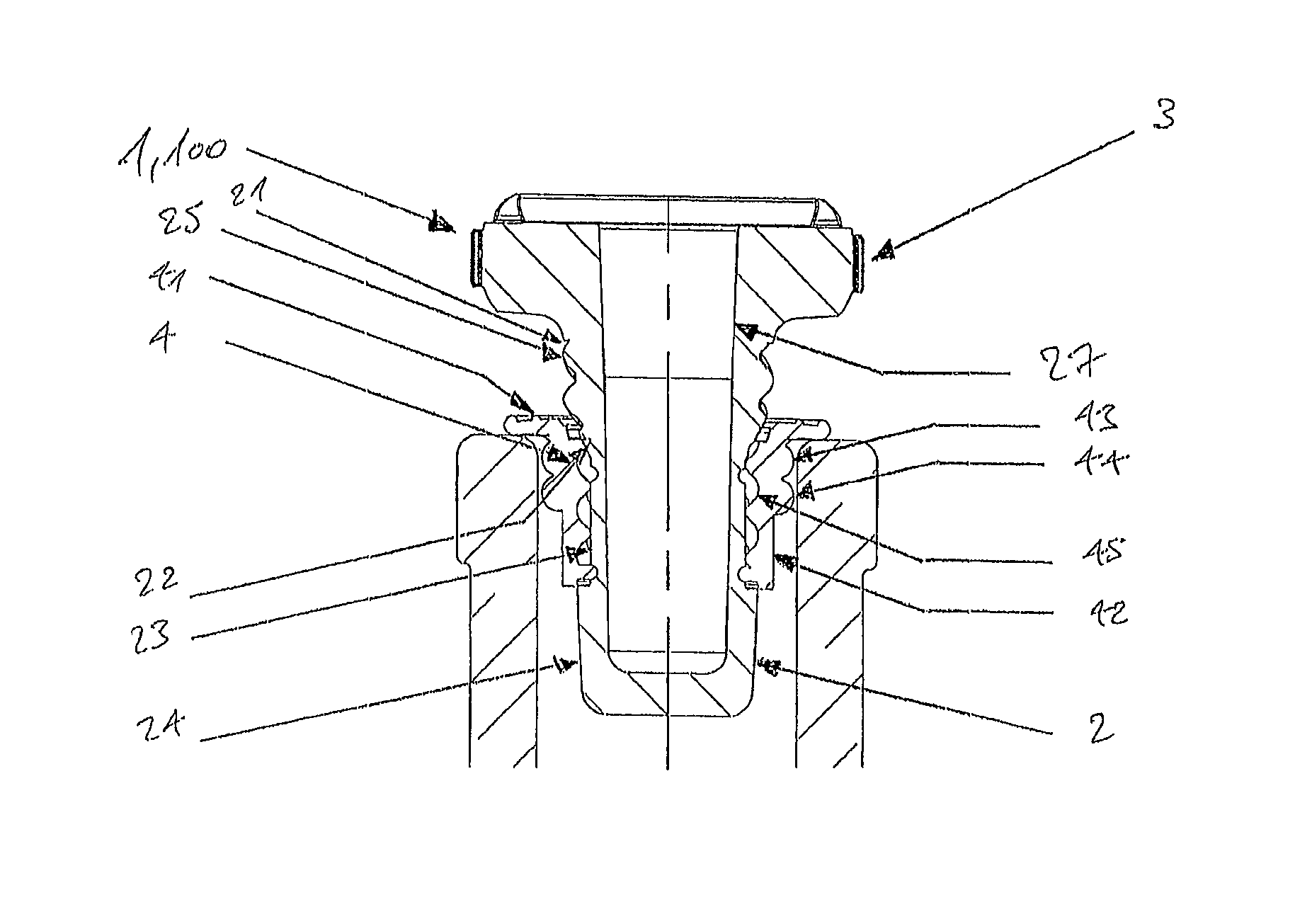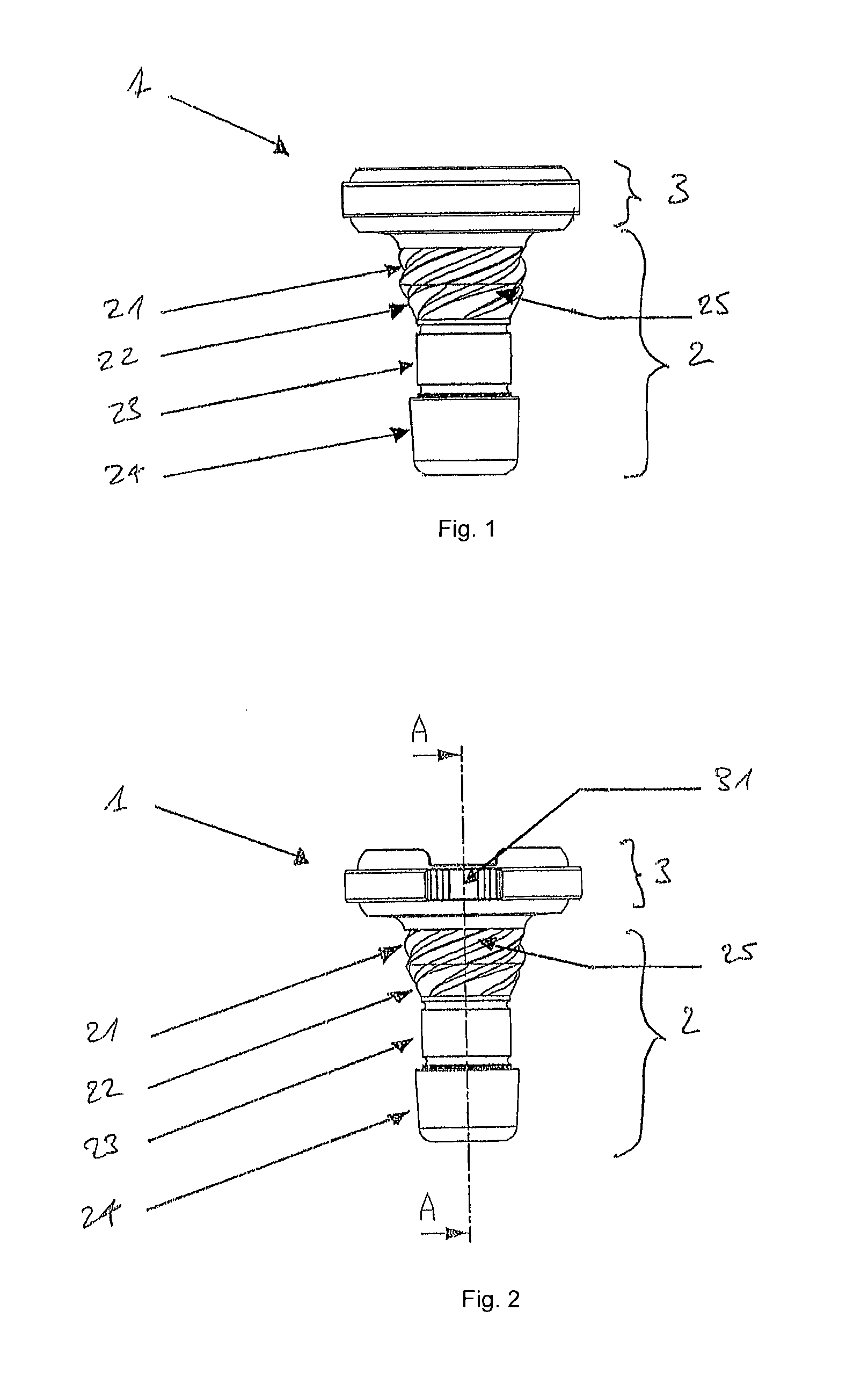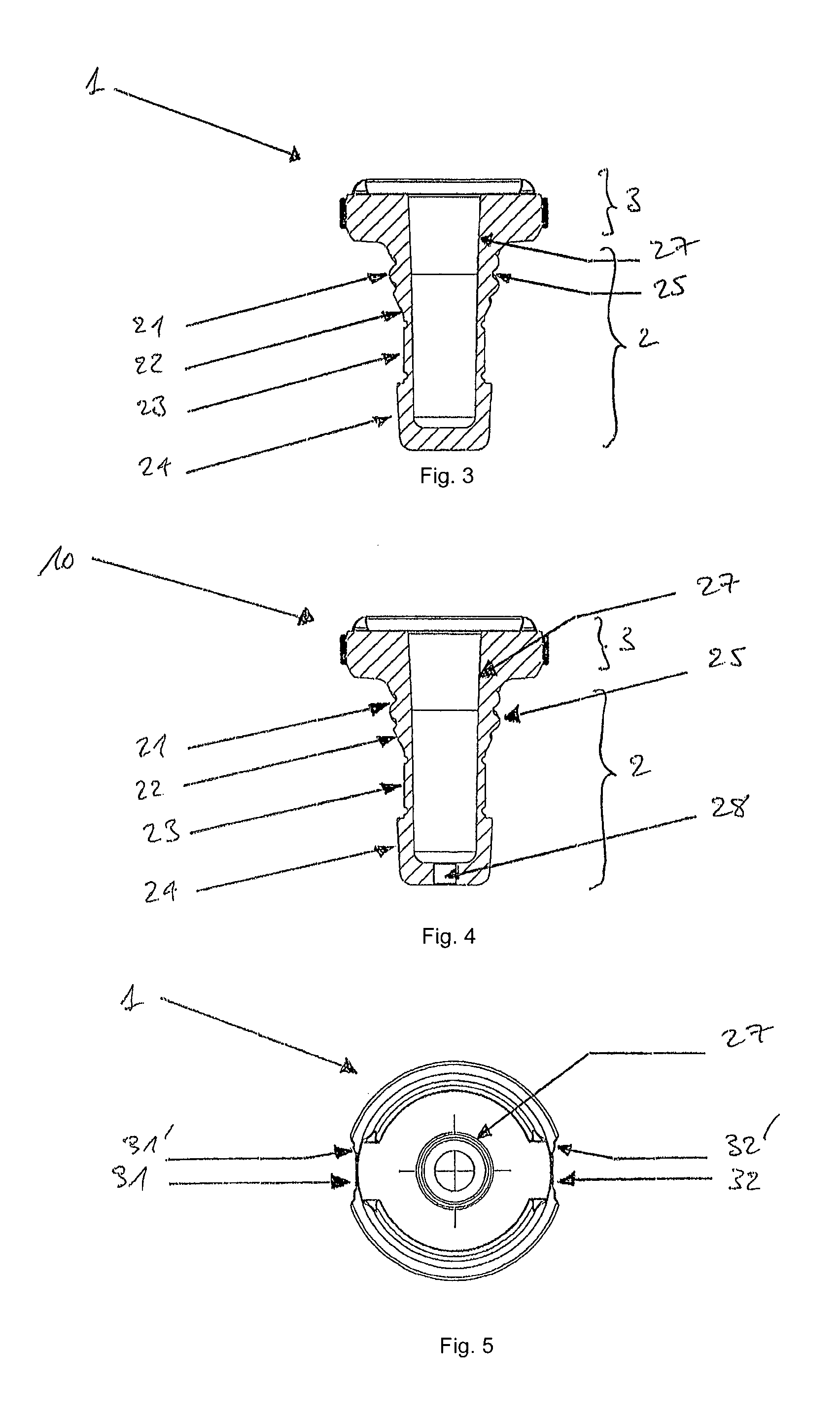Stopper for a bottle and sealing element for said stopper
a technology for sealing elements and stoppers, which is applied in the direction of closing stoppers, application, rotating screw stoppers, etc., can solve the problems of inability to achieve proper sealing any longer once, inability to reattach generally, and inability to achieve proper sealing once again, etc., to achieve sufficient sealing of the stopper in the bottle for transportation and/or
- Summary
- Abstract
- Description
- Claims
- Application Information
AI Technical Summary
Benefits of technology
Problems solved by technology
Method used
Image
Examples
first embodiment
[0233]FIG. 1 shows a side view of a stopper 1 for a bottle according to the invention. The stopper 1 comprises a stopper part 2 for introduction into a mouth of a bottle and a head part 3 joining the stopper part 2 via a neck portion. The head part 3 of the stopper 1 may be defined in general terms as the part of the stopper 1 protruding out of the mouth of the bottle when the bottle is sealed by the stopper 1. The neck portion may be defined in general terms as the part of the stopper 1 where the head part 3 joins the stopper part 2. The neck portion therefore represents a transition part of the stopper 1 between the head part 3 and the stopper part 2. The neck portion extends a certain distance on the stopper part 2 away from the head part 3. Therefore, the neck portion does not only comprise the portion of the stopper part 2 which is located directly under the head part 3.
[0234]In the exemplary embodiment represented with respect to FIG. 1, the neck portion may start with the cur...
second embodiment
[0252]FIG. 6 shows a perspective cross-sectional view of a stopper 10 for a bottle according to the invention. FIG. 61 reveals the inside of the stopper 10 and, in particular, the inside walls of the longitudinal cavity 27. It further shows the opening 28, out of which the longitudinal cavity 27 opens out from the stopper 10.
[0253]FIG. 7 shows a perspective cross-sectional view of a stopper 100 for a bottle according to a third embodiment of the invention. The stopper 100 for a bottle according to the third embodiment of the invention differs from the stopper 10 for a bottle according to the second embodiment in that no opening is provided at the tip of the stopper part 2, so that the longitudinal cavity 27 does not open out at the tip of the stopper part 2. The longitudinal cavity 27 therefore only opens out at the upper surface of the head part 3, as apparent from FIG. 7.
[0254]As it will be appreciated by the skilled person, the stopper with a longitudinal cavity as described abov...
fifth embodiment
[0293]FIG. 14 shows a side view of a stopper 300 for a bottle according to the invention. FIG. 14 shows a longitudinal cavity 27 in solid lines, which represents a longitudinal cavity 27 formed within the stopper 300. The longitudinal cavity 27 extends along the longitudinal axis of the stopper 300 from an upper surface of the head part 3 up to a bottom located within the stopper 300.
[0294]FIG. 15 shows a side view of the stopper 200, 300 for a bottle according to a fourth or fifth embodiment of the invention with a sealing element 4 according to an embodiment of the invention that is arranged on the stopper part 2 of the stopper 200, 300. The sealing element 4 is shown in an intermediate position in the process of being brought from the sealed position to the unsealed position by the user.
[0295]FIG. 16 shows a side view of the stopper 200, 300 as represented in FIG. 15 in a later stage of the process of bringing the sealing element into the unsealed position. FIG. 16 shows that the...
PUM
 Login to View More
Login to View More Abstract
Description
Claims
Application Information
 Login to View More
Login to View More - R&D
- Intellectual Property
- Life Sciences
- Materials
- Tech Scout
- Unparalleled Data Quality
- Higher Quality Content
- 60% Fewer Hallucinations
Browse by: Latest US Patents, China's latest patents, Technical Efficacy Thesaurus, Application Domain, Technology Topic, Popular Technical Reports.
© 2025 PatSnap. All rights reserved.Legal|Privacy policy|Modern Slavery Act Transparency Statement|Sitemap|About US| Contact US: help@patsnap.com



